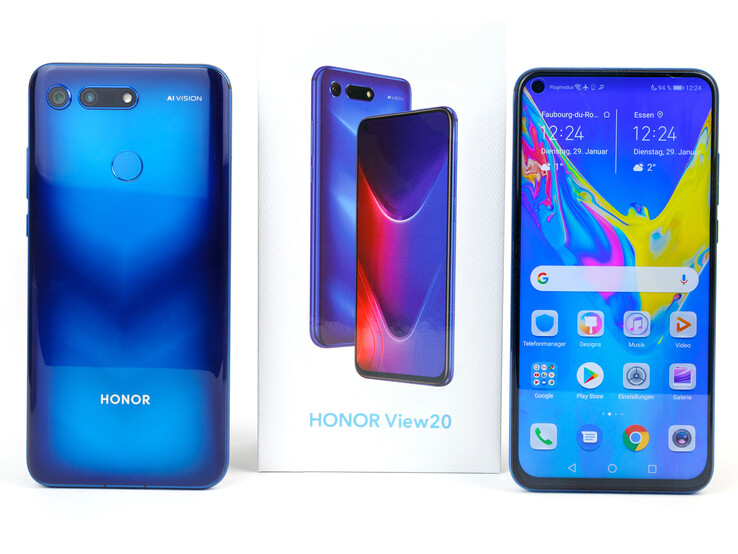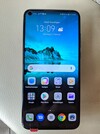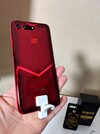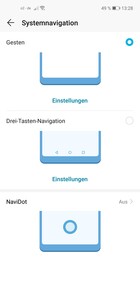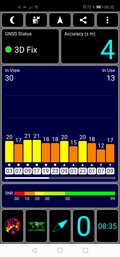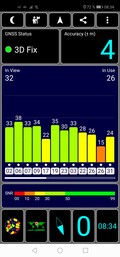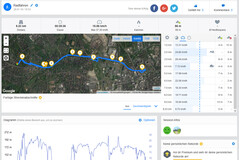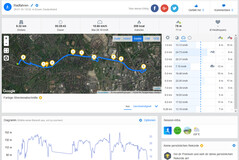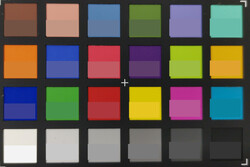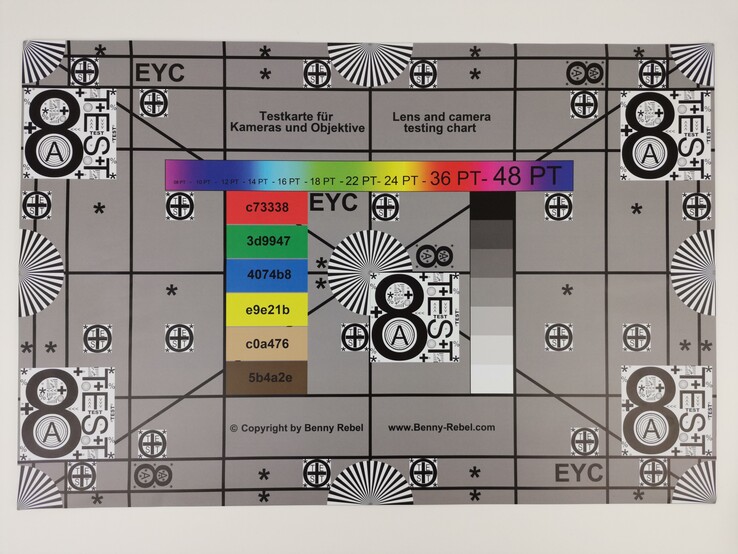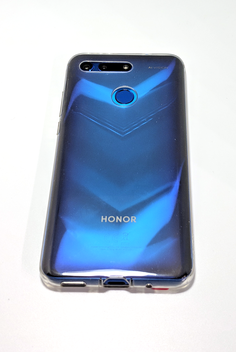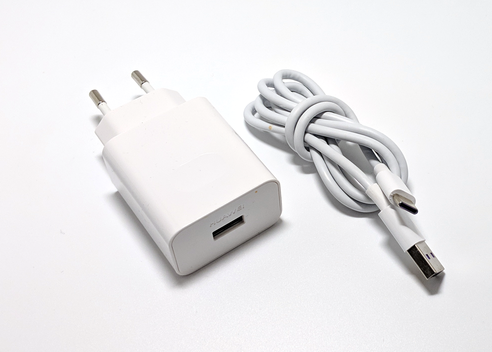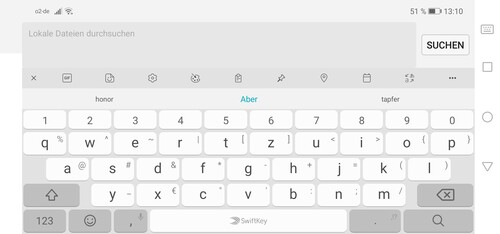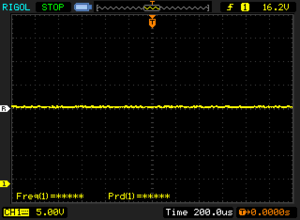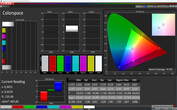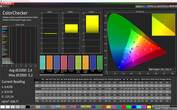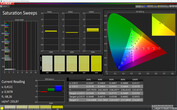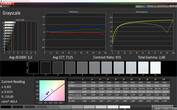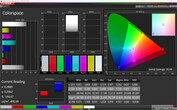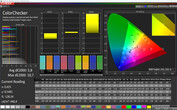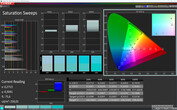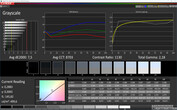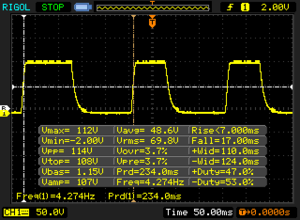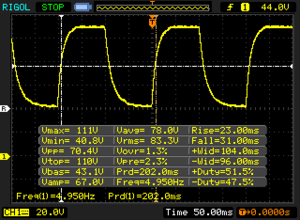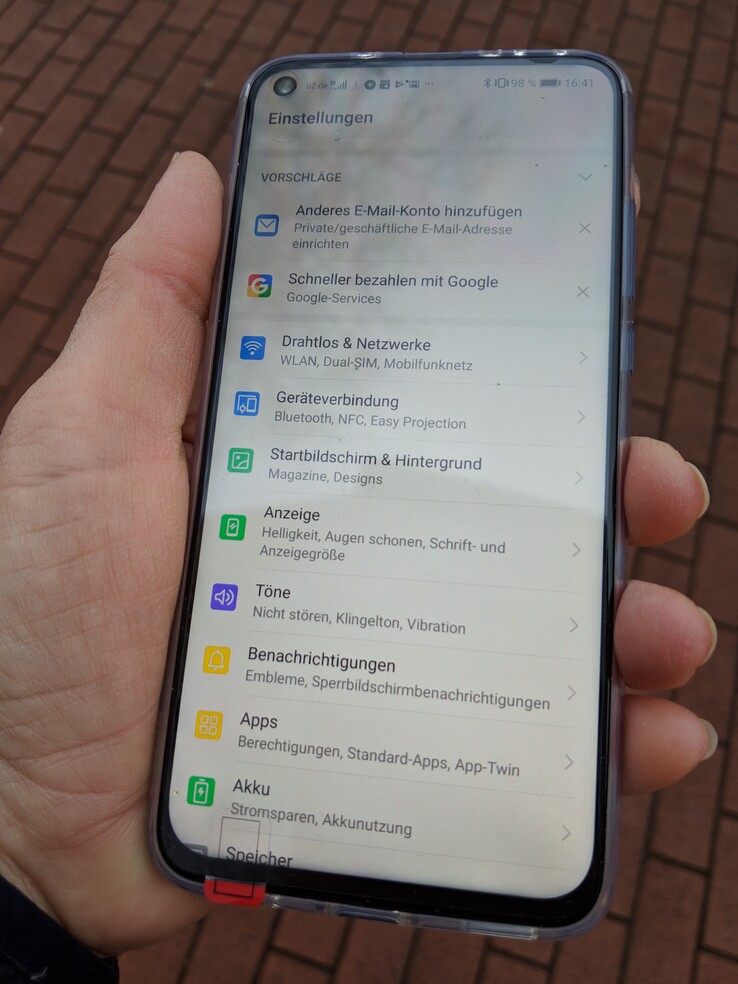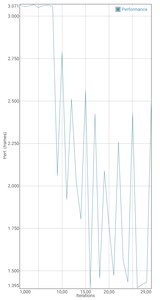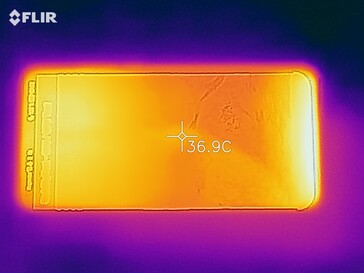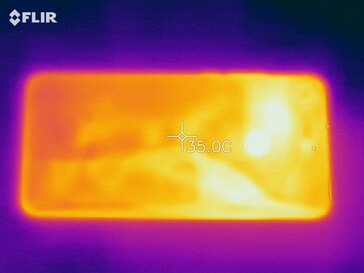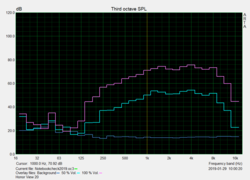Honor View 20 Smartphone Review

The Honor View 20 succeeds the View 10 and appeared to live up to its name better than its predecessor even before we started testing it. Honor has equipped the View 20 with a 48 MP rear-facing camera, which is 32 MP more than the equivalent in the View 20 and should allow for a greater degree of loss-free image cropping than any smartphone before it. Moreover, the View 20 is one of the first smartphones that has a punch-hole display, with its 25 MP front-facing camera sitting within the display rather than above it, as is the case with most smartphones.
The View 20 starts at 569 Euros (~$644), which is 70 Euros (~$79), or over 14%, more than Honor initially charged for the View 10. However, the View 20 is considerably cheaper than the Huawei Mate 20, which is powered by the same HiSilicon Kirin 980 SoC. However, the former has up to double the RAM and storage. The Mate 20 Pro is more expensive still and has 6 GB of RAM with 128 GB of storage. It is worth keeping in mind that the Mate 20 has now dropped to around 520 Euros (~$589) online, but the Mate 20 Pro remains at around 999 Euros (~$1131). The View 20 does not have expandable storage though, while the Mate 20 series support Huawei’s new nano memory cards, which are noticeably smaller, and more expensive, than microSD cards.
Honor currently sells two versions of the View 20. The base model costs 569 Euros (~$644) and has 6 GB of RAM with 128 GB of storage, while the premium version costs 80 Euros (~$90) more for an additional 2 GB RAM and 128 GB of storage.
We have chosen to compare the View 20 against other comparably priced flagships and its Huawei Mate 20 series counterparts. Our comparison devices include the ZTE Axon 9 Pro, Google Pixel 3 XL, Honor View 10, Huawei Mate 20, OnePlus 6T and Xiaomi Mi Mix 3. These devices retail for between 470 Euros (~$532) and 949 Euros (~$1075) but are all comparably equipped with either 64 GB or 128 GB of internal storage.
Case
Once again, Honor has designed a smartphone with eye-catching back glass, just as it first did with the Honor 8 in 2016. The Chinese company has given the back glass on the View 20 a nano-vacuum coating, which causes the glass to look like it has a chevron effect when the light catches it.
Honor currently sells the View 20 in Phantom Blue, Sapphire Blue and Midnight Black. The Phantom Blue version is the only one to come with 8 GB RAM and 256 GB of storage, while the other two are equipped with 2 GB less RAM and half the internal storage. There are also two red versions, one which has been created in collaboration with the Italian fashion brand Moschino. However, the red models are only currently available in select markets like China.
Our review unit is well-made with the glass and metal design combining to create a sturdy smartphone. The smooth glass back is surprisingly grippy too, but the device will slip off a surface that is not completely flat. Thankfully, Honor includes a silicone case in the box to protect the View 20 from minor drops and to give it more grip.
Honor has equipped the View 20 with a 48 MP rear-facing camera and a 25 MP front-facing sensor. There is also a time-of-flight (ToF) camera that sits in its own housing on the back of the device with the LED flash.
The two rear-facing camera housings protrude slightly from the back glass, which means that the View 20 can never lie flat on a table, for example. Honor has not equipped the device with an in-screen fingerprint sensor though as Huawei did with the Mate 20 Pro. Instead, the company has placed the fingerprint sensor below the rear-facing cameras like with many smartphones. The View 20 sports Honor’s new logo too, which sits towards the bottom of the back glass.
The View 20 also has slightly curved edges that taper into the metal frame and give the smartphone a premium feel. The device also feels satisfyingly heavy and weighs 180 g, which makes it lighter than all but the Axon 9 Pro out of our comparison devices.
Connectivity
As mentioned earlier, the Midnight Black and Sapphire Blue versions have 6 GB RAM and 128 GB of internal storage, which puts them on par with many modern flagships. However, the Phantom Blue model has 8 GB RAM and 256 GB of internal storage, the combination of which we have seen on only a few smartphones. All View 20 variants are powered by the HiSilicon Kirin 980 SoC, which offers a big leap in performance over its predecessor. This also applies to the integrated ARM Mali-G76 MP10 GPU, which is the first smartphone GPU that can create bokeh-effect videos.
Honor has set our expectations high with the View 20’s cameras. The 48 MP rear-facing camera is a higher resolution sensor than the one that Huawei used in the Mate 20 Pro, as is the 25 MP front-facing camera. The rear-facing camera is also complemented by a ToF camera, which provides the View 20 with depth of field data. Incidentally, the View 20 is one of the first smartphones to feature a ToF sensor, so we are intrigued to see whether it adds anything to image quality.
Music lovers rejoice, as the View 20 has a headphone jack, which has become a rarity on modern flagship smartphones. The device also has a USB 3.1 Type-C port should you have Type-C headphones. The View 20 can also be connected to an external display and used in a desktop mode that operates like Samsung DeX or Microsoft Continuum. Honor has equipped the device with an IR sensor too, which allows the View 20 to double as a smart remote via the preinstalled remote app.
Software
The View 20 ships with Magic UI 2.0, which is a customised version of Android 9 Pie. We first saw Magic UI on the Honor Magic 2, but the View 20 is the first device running Magic UI 2.0 to be released outside of China.
Magic UI 2.0 largely looks like stock Android, but Honor has implemented additional AI features, some of which are tied to the default camera and Internet browser apps. The device can recognise fine art and buildings, for example, while it can also give nutritional information about certain foods and tell you from where you can buy them.
However, the View 20 lacks some software features that the Magic 2 has like Huawei HiAI, which integrated speech-based caller ID recognition. Moreover, the View 20 lacks the intelligent decision-making algorithms and NPL technology that Honor included on the Magic 2. The inclusion of these features on the Magic 2 may explain why Honor has released the device only in a select few markets.
Magic UI 2.0 introduces new gestures that performed well in our tests. Firstly, you can perform a short swipe from the bottom of the screen, which returns you to the home screen. Secondly, swiping and holding opens the Recents menu. These function much like the gestures on iOS, but Honor has also included a back-button gesture that can be activated by swiping in from either the left or right edge of the screen. All three gestures worked reliably during our tests, unlike those that Google integrates on its Pixel 3 series or within stock Android 9 Pie. Honor still allows you to switch to the traditional Android navigation buttons if you do not like the gesture controls.
The Chinese company also preinstalls numerous apps including a backup app, a health app, HiCare, the Honor app and Party Mode, which allows you to sync music across multiple smartphones that are connected to the same Wi-Fi network. Our review unit also has the usual suite of Google apps and other third-party apps like Facebook preinstalled.
Connecting the View 20 to an external monitor via HDMI automatically launches Huawei Easy Projection, which is the company’s desktop mode. Easy Projection turns the smartphone’s display into a trackpad, but you can also connect a keyboard and mouse.
Our test device had January 2019 Android security patches installed at the time of testing, which were the most recent patches available at that time.
Communication & GPS
Our review unit performed comparatively poorly in our Wi-Fi tests, which we conducted with our Linksys EA8500 reference router. The View 20 achieved less than 350 Mb/s in both iperf3 Client tests, which is only faster than the View 10 in our comparison tables. By contrast, all our comparison devices achieved at least 150 Mb/s faster transfer speeds with the Xiaomi Mi Mix 3 consistently maintaining double the transfer speeds that the View 20 could manage.
We suspect that refinements of Huawei's Link Turbo technology could improve the Wi-Fi performance on the View 20 though. Link Turbo uses Huawei AI and Big Data to analyse individual user behaviour and network conditions to intelligently switch between Wi-Fi and LTE for optimal download speeds. However, at present the Wi-Fi performance on the View 20 is below par for what we have come to expect from a flagship smartphone
The View 20 also supports voice over LTE (VoLTE) and Wi-Fi calling (VoWiFi), but the device must be provisioned by your carrier for the technologies to work on your handset. Moreover, the View 20 is region locked, so the European model cannot utilise VoLTE on a US network even if that carrier has provisioned the device.
Honor has equipped the View 20 with dual-frequency GNSS, which it uses on the GPS network. The technology works by receiving two signals from satellites rather than one, which should increase location accuracy. We can confirm this with the GPS Test app, which determines that our review unit can achieve a satellite fix with up to four metres accuracy whether indoors or outdoors. The latter is typical for a modern flagship smartphone, but the former gives the View 20 the edge over many of its competitors in this regard.
We subjected the View 20 to a bike ride to test its GPS accuracy against the Garmin Edge 500, a professional navigation device. Our review unit generally recorded our route accurately and performed even better than the Garmin did in certain sections. However, the View 20 struggled in built-up residential areas and consistently deviated by around 1-2 metres from our actual route. Both devices cut some corners too. Overall, the View 20 is accurate enough for all general navigation tasks.
Telephone Features & Call Quality
The View 20 is a dual-SIM device and has two dedicated nano-SIM card slots.
Our review unit has good call quality, and our call partner remained intelligible throughout our tests. The same is the case from our end too, although the microphone cannot filter out all background noise.
The phone app functions differently from the default Google app. The main difference is that you can directly access calendar events and notes during a call. However, the shortcut opens Huawei’s memo app and not Google Keep, for reference.
Cameras
The View 20 is the first smartphone to have a 48 MP camera. Honor has equipped the device with a Sony IMX586 sensor that the Japanese company first introduced in summer 2018. The IMX586 utilised Quad-Bayer technology to either capture images at 48 MP, or combine four pixels into one large pixel, which is known as pixel binning. The effective resolution drops to 12 MP, but this should reduce image noise and improve the quality of low-light photos. It is worth keeping this in mind when setting the resolution, as our examples show.
Our review unit takes impressively detailed photos in good light. Zooming in on our example photos results in hardly any image noise, such is the quality of the IMX586 sensor.
The images to the right are of an illusion created by architect Eric Carlson in the 20-metre-high atrium of the Luis Vuitton store in Paris. We used this setting as an example to demonstrate the strength of the View 20’s main camera. The installation is a semicircle of 1,900 stainless steel tubes, which are mirrored by a reflective wall to create a spherical effect. Looking from the centre towards the light-flooded ceiling gives the illusory effect that you are standing in the middle of a huge fountain.
The View 20 does a great job with its 48 MP shot, especially as fine details like the ceiling lighting remain visible even when we look closely. There is some image noise in darker areas, but this is significantly reduced in the 12 MP picture thanks to pixel binning. In short, Honor’s #SeeTheUnseen appears to be one of the few marketing straplines to live up to the hype.
We also chose to take some other tests shots with the Apple iPhone XS, the ASUS ROG Phone and a Canon EOS 70D SLR camera to compare their results with those taken with the View 20. On the one hand, it is possible to make lossless crops at high magnifications with the View 20’s 48 MP shots, but the image quality is noticeably worse at maximum zoom. Zooming in on scene 1 demonstrates this well. Neither the bunny nor the barrel nor the bushes look that sharp. The bunny’s fur looks markedly less detailed in the View 20’s 48 MP photo than it does in the photos shot by our comparison devices.
The View 20 takes a better-quality picture, in our opinion, in scene 3 than the iPhone XS, but it looks worse than what the ROG Phone manages. Moreover, while the wall and the trees are clearly recognisable in scene 2, dark areas are overly underexposed compared to the photos taken with our comparison devices.
The front-facing camera is a 25 MP sensor, which is a resolution we would be impressed with if it were a rear-facing camera let alone a front-facing one. The camera takes good photos, but they can look artificial in some light. The ToF camera cannot take pictures on its own, but it provides depth of field data for bokeh effects. Honor also sells a dock that uses the ToF camera to provide motion tracking in games. Unfortunately, the company currently only sells the dock in China, and its implementation appears to be rather limited, as it is restricted to incorporating AR Mojis within games.
We also subjected the View 20 to further camera tests under controlled lighting conditions. Our review unit captures colours vibrantly, although pure white and black tones are slightly warmer than they should be, which affects skin tones.
Our review unit also captured our test chart well. Our chart looks sharp, even at the outer edges of the picture. The only weakness is the contrast, which drops off in the bottom corners of the picture, but this is an issue for most smartphones.
Accessories & Warranty
Honor pre-applies a screen protector to the View 20, as many Chinese manufacturers do with their smartphones. The screen protector is made of plastic and looked tatty by the end of our tests. Honor also includes a SIM tool, a fast charger, a USB Type-A to Type-C cable, a quick-start guide, and a warranty card. There is a clear silicone case too for added protection.
The Phantom Red Moschino edition also comes with a corresponding exclusive case, of which we have included a picture at the start of this review. The View 20 comes with two years manufacturer’s warranty too. Please see our Guarantees, Return policies and Warranties article for more country-specific information.
Input Devices & Operation
Honor preinstalls SwiftKey as the default keyboard. The keyboard functions just as well as it does on other devices that we have tested. SwiftKey is almost endlessly customisable and has Microsoft Translator integration, which saves you from installing an additional app.
As mentioned earlier in this review, the View 20 doubles as a trackpad when plugged into an external monitor. There is also a sketch mode, but it is worth noting that any drawings disappear as soon as you leave the special mode.
The fingerprint sensor supports up to five fingers, which worked effortlessly during our tests. The sensor can also be used to open the notification shade and to scroll through the gallery app.
Display
The View 20 has a 6.4-inch display with a 91.8% screen-to-body ratio thanks to its small front-facing camera cut-out, which we measure at a diameter of 4.5 mm. The camera cut-out sits in the upper-left corner of the screen where it should not disturb during watching videos or while playing games.
While Huawei has moved onto 4K with the Mate 20 Pro, Honor has equipped the View 20 with a 1080p panel, just like its parent company did with the Mate 20. Our review unit achieved an average maximum brightness of 475 cd/m², which puts the View 20 third-bottom in our comparison table and 65% darker than the Mate 20. Our test device is just as evenly lit as our comparison devices though. Moreover, Honor does not use pulse-width modulation (PWM) for controlling the View 20’s brightness.
| |||||||||||||||||||||||||
Brightness Distribution: 94 %
Center on Battery: 492 cd/m²
Contrast: 1230:1 (Black: 0.4 cd/m²)
ΔE Color 2.4 | 0.5-29.43 Ø5
ΔE Greyscale 3.2 | 0.57-98 Ø5.3
97.5% sRGB (Calman 2D)
Gamma: 2.06
| Honor View 20 LTPS, 2310x1080, 6.40 | Honor View 10 IPS, 2160x1080, 5.99 | Xiaomi Mi Mix 3 OLED, 2340x1080, 6.39 | ZTE Axon 9 Pro AMOLED, 2248x1080, 6.21 | OnePlus 6T Optic AMOLED, 2340x1080, 6.41 | Google Pixel 3 XL AMOLED, 2960x1440, 6.30 | Huawei Mate 20 TFT-LCD (IPS), 2244x1080, 6.53 | |
|---|---|---|---|---|---|---|---|
| Screen | 9% | 28% | 1% | 7% | -3% | 26% | |
| Brightness middle | 492 | 530 8% | 599 22% | 521 6% | 437 -11% | 410 -17% | 782 59% |
| Brightness | 475 | 523 10% | 593 25% | 517 9% | 442 -7% | 413 -13% | 784 65% |
| Brightness Distribution | 94 | 88 -6% | 96 2% | 96 2% | 95 1% | 97 3% | 94 0% |
| Black Level * | 0.4 | 0.35 12% | 0.36 10% | ||||
| Contrast | 1230 | 1514 23% | 2172 77% | ||||
| Colorchecker dE 2000 * | 2.4 | 2.4 -0% | 1.4 42% | 2.9 -21% | 2.21 8% | 3.16 -32% | 2.3 4% |
| Colorchecker dE 2000 max. * | 5.2 | 5.5 -6% | 3.2 38% | 5.5 -6% | 4.27 18% | 5.5 -6% | 7 -35% |
| Greyscale dE 2000 * | 3.2 | 2.2 31% | 2 37% | 2.7 16% | 2.1 34% | 1.7 47% | 2.4 25% |
| Gamma | 2.06 107% | 2.25 98% | 2.25 98% | 2.01 109% | 2.307 95% | 2.219 99% | 2.22 99% |
| CCT | 7125 91% | 6598 99% | 6496 100% | 6288 103% | 6353 102% | 6653 98% | 6839 95% |
* ... smaller is better
Screen Flickering / PWM (Pulse-Width Modulation)
| Screen flickering / PWM not detected | |||
In comparison: 53 % of all tested devices do not use PWM to dim the display. If PWM was detected, an average of 17900 (minimum: 5 - maximum: 3846000) Hz was measured. | |||
The View 20 has two colour modes to choose from, which we examined closely with a photo spectrometer and CalMAN analysis software. The default profile, Normal, covers almost all the sRGB colour space and it largely reproduces colours accurately, albeit slightly too cool for our liking. The Vivid profile uses the DCI-P3 colour space, which is best suited for watching videos. Colours look more saturated as the profile’s name suggests, and its colour reproduction looks cooler too.
Display Response Times
| ↔ Response Time Black to White | ||
|---|---|---|
| 24 ms ... rise ↗ and fall ↘ combined | ↗ 7 ms rise | |
| ↘ 17 ms fall | ||
| The screen shows good response rates in our tests, but may be too slow for competitive gamers. In comparison, all tested devices range from 0.1 (minimum) to 240 (maximum) ms. » 48 % of all devices are better. This means that the measured response time is worse than the average of all tested devices (21.5 ms). | ||
| ↔ Response Time 50% Grey to 80% Grey | ||
| 54 ms ... rise ↗ and fall ↘ combined | ↗ 23 ms rise | |
| ↘ 31 ms fall | ||
| The screen shows slow response rates in our tests and will be unsatisfactory for gamers. In comparison, all tested devices range from 0.2 (minimum) to 636 (maximum) ms. » 89 % of all devices are better. This means that the measured response time is worse than the average of all tested devices (33.7 ms). | ||
The View 20 is easy to read in normal daylight, and its factory-fitted screen protector film reduces reflections slightly, albeit not completely. We would recommend finding a shady spot or turning your back to the sun if possible when using the View 20 in direct sunlight.
Performance
The Mate 20, Mate 20 Pro and the View 20 are currently the only smartphones powered by the HiSilicon Kirin 980 SoC. Our review unit performed on par with its Mate 20 series counterparts in synthetic benchmarks. The Kirin 980 largely outperforms the Snapdragon 845 in benchmarks too.
The ARM Mali-G76 MP10 struggles in some cases against the Qualcomm Adreno 630 though, but the View 20 consistently outperforms the Pixel 3 XL. The Mali-G72 MP12 integrated within the Kirin 970 performed well too, but it cannot keep pace with its more-powerful successor.
| AnTuTu v7 - Total Score (sort by value) | |
| Honor View 20 | |
| Xiaomi Mi Mix 3 | |
| ZTE Axon 9 Pro | |
| OnePlus 6T | |
| Google Pixel 3 XL | |
| Huawei Mate 20 | |
| Average HiSilicon Kirin 980 (268359 - 322616, n=10) | |
| AnTuTu v6 - Total Score (sort by value) | |
| Honor View 20 | |
| Honor View 10 | |
| Xiaomi Mi Mix 3 | |
| ZTE Axon 9 Pro | |
| OnePlus 6T | |
| Google Pixel 3 XL | |
| Huawei Mate 20 | |
| Average HiSilicon Kirin 980 (245662 - 254229, n=9) | |
The View 20 also outs its predecessor in browser benchmarks, while the Kirin 980 largely has the edge over the Snapdragon 845 too. While our review unit does not finish top in our comparison tables, its performance is on par with our comparison devices, nonetheless.
| JetStream 1.1 - Total Score | |
| Honor View 20 (Chrome 71) | |
| Huawei Mate 20 (Chrome 70.0.3538.80) | |
| Average of class Smartphone (last 2 years) | |
| Average HiSilicon Kirin 980 (93.2 - 109.9, n=9) | |
| OnePlus 6T (Chrome 70) | |
| Xiaomi Mi Mix 3 (Chrome 70) | |
| Google Pixel 3 XL (Chrome 70) | |
| ZTE Axon 9 Pro (Chrome 71) | |
| Honor View 10 (Chrome 63) | |
| Octane V2 - Total Score | |
| Average of class Smartphone (4633 - 89112, n=213, last 2 years) | |
| Honor View 20 (Chrome 71) | |
| Huawei Mate 20 (Chrome 70.0.3538.80) | |
| Average HiSilicon Kirin 980 (20618 - 23285, n=10) | |
| OnePlus 6T (Chrome 70) | |
| Xiaomi Mi Mix 3 (Chrome 70) | |
| Google Pixel 3 XL (Chrome 70) | |
| ZTE Axon 9 Pro (Chrome 71) | |
| Honor View 10 (Chrome 63) | |
| Mozilla Kraken 1.1 - Total | |
| Honor View 10 (Chrome 63) | |
| Google Pixel 3 XL (Chrome 70) | |
| ZTE Axon 9 Pro (Chrome 71) | |
| Xiaomi Mi Mix 3 (Chrome 70) | |
| OnePlus 6T (Chrome 70) | |
| Average HiSilicon Kirin 980 (1948 - 3098, n=10) | |
| Honor View 20 (Chrome 71) | |
| Huawei Mate 20 (Chrome 70.0.3538.80) | |
| Average of class Smartphone (388 - 9999, n=173, last 2 years) | |
| WebXPRT 3 - Overall | |
| Average of class Smartphone (39 - 304, n=122, last 2 years) | |
| Huawei Mate 20 (Chrome 70.0.3538.80) | |
| Average HiSilicon Kirin 980 (86 - 124, n=10) | |
| Google Pixel 3 XL (Chrome 70) | |
| Honor View 20 (Chrome 71) | |
| Xiaomi Mi Mix 3 (Chrome 70) | |
| WebXPRT 2015 - Overall | |
| Huawei Mate 20 (Chrome 70.0.3538.80) | |
| Google Pixel 3 XL (Chrome 70) | |
| Average HiSilicon Kirin 980 (228 - 334, n=5) | |
| Honor View 20 (Chrome 71) | |
| OnePlus 6T (Chrome 70) | |
| Xiaomi Mi Mix 3 (Chrome 70) | |
| Honor View 10 (Chrome 63) | |
* ... smaller is better
Our test device handles multi-tasking with ease thanks to its 8 GB of RAM. The 6 GB base model is also well-equipped and holds its own against other modern flagships.
The 128 GB or 256 GB of internal storage should be plenty too, but 48 MP pictures will quickly start eating up memory, so expandable storage would have been useful, as would a cheaper 64 GB version. However, the View 20 has more storage than most flagships, so it scores well here too.
The View 20 has class-leading read and write speeds. Our review unit even finished first in our AndroBench 3-5 comparison table and even 4% ahead of the Mate 20. Overall, Honor has does a great job with the View 20 here, and it outperforms considerably more-expensive competitors.
| Honor View 20 | Honor View 10 | Xiaomi Mi Mix 3 | ZTE Axon 9 Pro | OnePlus 6T | Google Pixel 3 XL | Huawei Mate 20 | Average 256 GB UFS 2.1 Flash | Average of class Smartphone | |
|---|---|---|---|---|---|---|---|---|---|
| AndroBench 3-5 | -7% | -36% | -34% | -33% | -17% | -4% | 11% | 142% | |
| Sequential Read 256KB | 847 | 810 -4% | 675 -20% | 719 -15% | 735 -13% | 633 -25% | 840 -1% | 826 ? -2% | 1508 ? 78% |
| Sequential Write 256KB | 250.1 | 194.3 -22% | 206.8 -17% | 196.4 -21% | 204.4 -18% | 228.6 -9% | 196.7 -21% | 358 ? 43% | 1118 ? 347% |
| Random Read 4KB | 168.9 | 144.3 -15% | 133.2 -21% | 141.3 -16% | 138.5 -18% | 120.8 -28% | 157.9 -7% | 166.6 ? -1% | 247 ? 46% |
| Random Write 4KB | 138.9 | 160 15% | 19.54 -86% | 22.52 -84% | 22 -84% | 132.7 -4% | 158.1 14% | 141.5 ? 2% | 272 ? 96% |
Games
The View 20 is a powerful gaming smartphone, especially the 8 GB version. We doubt that most people could tell the difference between the Mali-G76 MP10 and the Adreno 630, as both achieve smooth frame rates in the most complex of modern games.
The optional dock that we mentioned earlier in this review has the potential to utilise the ToF camera to deliver motion-tracking within games. However, as the dock is only currently available in China, the 3D fun is currently limited to just placing an AR Moji within videos that simulates the movements of those who are being recorded.
The View 20 does come with an exclusive Fortnite skin though: The Honor Guard skin will be exclusively reserved for View 20 buyers and will become available around three weeks after Honor sets officially selling the View 20.
The View 20 is also one of the first Android smartphones that can run PUBG stably at 60 FPS, which our test device replicated in Real Racing 3 too.
PUBG Mobile
Real Racing 3
Emissions
Temperature
(+) The maximum temperature on the upper side is 32.1 °C / 90 F, compared to the average of 35 °C / 95 F, ranging from 21.9 to 56 °C for the class Smartphone.
(+) The bottom heats up to a maximum of 32.1 °C / 90 F, compared to the average of 33.8 °C / 93 F
(+) In idle usage, the average temperature for the upper side is 27.8 °C / 82 F, compared to the device average of 32.7 °C / 91 F.
Speakers
The View 20 has a mono speaker, which is good for calls in hands-free mode. We wish that Honor had added a second speaker, as the single speaker is not powerful enough to deliver an immersive experience when listening to music or watching videos. The speaker on our test device gets louder than those in its Huawei counterparts but has weaker bass reproduction. The View 20 and Mate 20 reproduce mid and high tones equally well though. Incidentally, the View 20 cannot match the Pixel 3 XL on speaker quality, the latter of which is yet to be surpassed by any other smartphone in our rankings.
You can also use the headphone jack, USB Type-C port or Bluetooth for connecting external speakers and headphones. All will offer a better listening experience than the mono speaker.
Honor View 20 audio analysis
(+) | speakers can play relatively loud (84.3 dB)
Bass 100 - 315 Hz
(-) | nearly no bass - on average 22.8% lower than median
(±) | linearity of bass is average (12.8% delta to prev. frequency)
Mids 400 - 2000 Hz
(+) | balanced mids - only 4.5% away from median
(+) | mids are linear (4.4% delta to prev. frequency)
Highs 2 - 16 kHz
(±) | higher highs - on average 6.3% higher than median
(+) | highs are linear (4.8% delta to prev. frequency)
Overall 100 - 16.000 Hz
(±) | linearity of overall sound is average (20.9% difference to median)
Compared to same class
» 32% of all tested devices in this class were better, 8% similar, 60% worse
» The best had a delta of 12%, average was 38%, worst was 134%
Compared to all devices tested
» 52% of all tested devices were better, 8% similar, 41% worse
» The best had a delta of 4%, average was 25%, worst was 134%
Huawei Mate 20 audio analysis
(±) | speaker loudness is average but good (78.4 dB)
Bass 100 - 315 Hz
(-) | nearly no bass - on average 18.1% lower than median
(±) | linearity of bass is average (12.5% delta to prev. frequency)
Mids 400 - 2000 Hz
(+) | balanced mids - only 4.5% away from median
(+) | mids are linear (4.8% delta to prev. frequency)
Highs 2 - 16 kHz
(±) | higher highs - on average 7.5% higher than median
(+) | highs are linear (6.2% delta to prev. frequency)
Overall 100 - 16.000 Hz
(±) | linearity of overall sound is average (23.2% difference to median)
Compared to same class
» 46% of all tested devices in this class were better, 8% similar, 47% worse
» The best had a delta of 12%, average was 38%, worst was 134%
Compared to all devices tested
» 65% of all tested devices were better, 6% similar, 29% worse
» The best had a delta of 4%, average was 25%, worst was 134%
Google Pixel 3 XL audio analysis
(+) | speakers can play relatively loud (84.2 dB)
Bass 100 - 315 Hz
(-) | nearly no bass - on average 73.5% lower than median
(+) | bass is linear (0% delta to prev. frequency)
Mids 400 - 2000 Hz
(-) | nearly no mids - on average 73.5% lower than median
(+) | mids are linear (0% delta to prev. frequency)
Highs 2 - 16 kHz
(-) | nearly no highs - on average 73.5% lower than median
(+) | highs are linear (0% delta to prev. frequency)
Overall 100 - 16.000 Hz
(-) | overall sound is not linear (124.6% difference to median)
Compared to same class
» 93% of all tested devices in this class were better, 6% similar, 1% worse
» The best had a delta of 12%, average was 38%, worst was 134%
Compared to all devices tested
» 98% of all tested devices were better, 2% similar, 0% worse
» The best had a delta of 4%, average was 25%, worst was 134%
Power Management
Power Consumption
The View 20 looks like an economical device on paper, with its 1080p IPS display and its power-efficient Kirin 980 SoC. However, our review unit finished bottom of our comparison table and 13% behind the Mate 20 series. While the View 20 consumes less under load than most of our comparison devices, its idle power consumption is noticeably higher, which is the culprit of its poor test results.
| Off / Standby | |
| Idle | |
| Load |
|
| Honor View 20 4000 mAh | Honor View 10 3750 mAh | Xiaomi Mi Mix 3 3200 mAh | ZTE Axon 9 Pro 4000 mAh | OnePlus 6T 3700 mAh | Google Pixel 3 XL 3430 mAh | Huawei Mate 20 4000 mAh | Average HiSilicon Kirin 980 | Average of class Smartphone | |
|---|---|---|---|---|---|---|---|---|---|
| Power Consumption | 2% | 43% | 20% | 26% | 19% | 10% | 14% | 18% | |
| Idle Minimum * | 0.97 | 1.05 -8% | 0.49 49% | 0.86 11% | 0.7 28% | 0.7 28% | 0.69 29% | 0.802 ? 17% | 0.897 ? 8% |
| Idle Average * | 2.58 | 2.36 9% | 0.67 74% | 1.1 57% | 1.1 57% | 1.4 46% | 2.28 12% | 2.07 ? 20% | 1.452 ? 44% |
| Idle Maximum * | 2.63 | 2.41 8% | 0.87 67% | 1.21 54% | 2.1 20% | 2 24% | 2.52 4% | 2.38 ? 10% | 1.629 ? 38% |
| Load Average * | 5.24 | 4.93 6% | 3.64 31% | 5.02 4% | 4.2 20% | 4.8 8% | 5.21 1% | 4.87 ? 7% | 5.55 ? -6% |
| Load Maximum * | 8.73 | 9.04 -4% | 9.04 -4% | 10.82 -24% | 8.3 5% | 9.5 -9% | 8.49 3% | 7.46 ? 15% | 8.31 ? 5% |
* ... smaller is better
Battery Life
The View 20 has a 4,000 mAh battery that outlasted most of our comparison devices in our battery life tests. Our review unit achieved a longer Wi-Fi runtime than all our comparison devices and is only a few minutes short of the OnePlus 6T in our idle battery life test. However, the View 20 struggles under load, where it needs recharging 29% sooner than the Mate 20.
In short, the View 20 should easily last a full day of moderate use. You may be reaching for your charger sooner than you would like if you push the device hard though. Fortunately, the included fast charger recharges the View 20 fully in 1 h 20 m.
| Honor View 20 4000 mAh | Honor View 10 3750 mAh | Xiaomi Mi Mix 3 3200 mAh | ZTE Axon 9 Pro 4000 mAh | OnePlus 6T 3700 mAh | Google Pixel 3 XL 3430 mAh | Huawei Mate 20 4000 mAh | |
|---|---|---|---|---|---|---|---|
| Battery Runtime | -5% | -14% | -32% | 1% | -7% | 7% | |
| Reader / Idle | 1928 | 1671 -13% | 1810 -6% | 1936 0% | 1725 -11% | 1892 -2% | |
| H.264 | 932 | 819 -12% | 836 -10% | 903 -3% | 724 -22% | 1030 11% | |
| WiFi v1.3 | 969 | 679 -30% | 719 -26% | 661 -32% | 865 -11% | 691 -29% | 885 -9% |
| Load | 222 | 305 37% | 194 -13% | 261 18% | 299 35% | 287 29% |
Pros
Cons
Verdict
The Honor View 20 is an excellent flagship challenger. It is not as good value for money as the Xiaomi Mi Mix 3, but it is available in Europe and is Widevine Level 1 DRM-certified, which means that you can stream HD content on services like Amazon Video, Google Play Video and Netflix.
However, if you are not on a budget, then we recommend considering the View 20, for it combines the elegance of more-expensive flagships, but it still packs a punch. Its Kirin 980 puts it on the same page as the more-expensive Mate 20 and Mate 20 Pro, while it can also keep pace with its Snapdragon 845-powered competitors. Moreover, it has excellent cameras and a higher screen-to-body ratio than most current flagships.
The Honor View 20 is a fantastic smartphone with an excellent camera, forward-thinking design and enough performance to match the most powerful of modern flagships.
The inclusion of USB 3.1, 8 GB RAM, 256 GB internal storage, a headphone jack, an IR sensor and dual-SIM functionality is welcome too. Keep in mind that few other flagships have all those features, especially the latter three.
The View 20 has its weakness though, but they pale next to the long lists of positives. Overall, Honor has delivered a flagship smartphone at a reasonable price and one that stands out from the more-established pack.
Honor View 20
-
02/07/2019 v6(old)
Inge Schwabe


 Deutsch
Deutsch English
English Español
Español Français
Français Italiano
Italiano Nederlands
Nederlands Polski
Polski Português
Português Русский
Русский Türkçe
Türkçe Svenska
Svenska Chinese
Chinese Magyar
Magyar